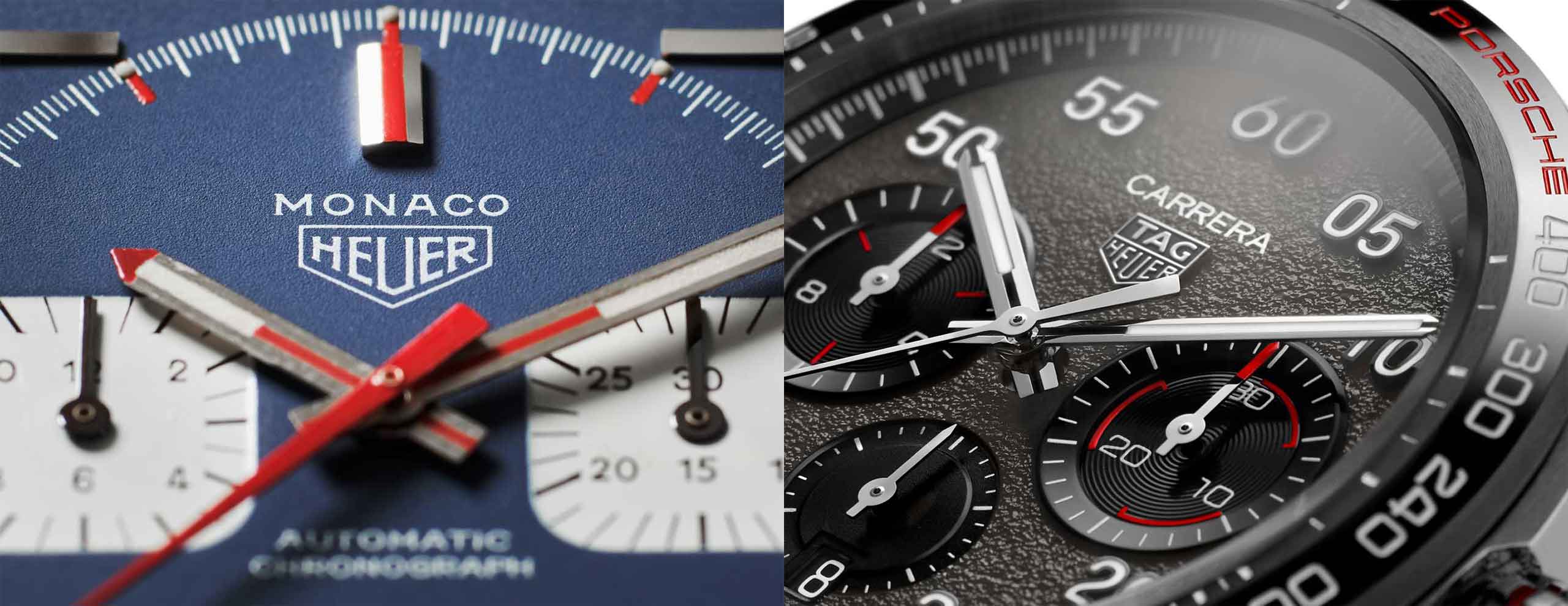Business
TAG Heuer is muscling up with two of its strongest watch icons, Carrera and Monaco
Business
TAG Heuer is muscling up with two of its strongest watch icons, Carrera and Monaco
Rumor is that changes will take place at the helm of TAG Heuer with CEO Frédéric Arnault moving to another role within the LVMH Group and Julien Tornare — currently the CEO of sister brand Zenith — replacing him in due course. Which makes this a good opportunity to analyze a brand which has repositioned itself in recent years vis-à-vis its main rivals such as Tudor, Breitling and Omega. Morgan Stanley and LuxeConsult estimated that the brand lost half of its luxury watch market share from 2017 to 2022 from 4% to 2%. In comparison, during this same time, Breitling tripled its own market share from 1% to 3% by increasing its sales by a factor of 2.7x and capturing margin by integrating their own retail.
Nevertheless, the brand has recently regained momentum by getting back on its home turf and reinterpreting its two main icons, the Monaco and the Carrera. And it has done a stringent work of cleaning its collections by eliminating some existing SKUs and being careful when launching new collections.
TAG Heuer: a brand with two faces
TAG Heuer has an incredible brand DNA which is bicephalous with Heuer for the tradition and TAG for the innovation. But at the same time this represents a daunting task to balance the product offering from icons to disruptive timepieces. Heuer also has a strong legacy of sportscar chronometry and has established strong historical bonds thanks to Jack Heuer — a marketing genius ahead of his time — in the 1970’s. Signing Steve McQueen and placing the “Monaco” Heuer watch on the film set of “Le Mans” was probably the foundation for this watch to become an icon. Launched just the year before in 1969, the Monaco was the first square cased automatic wristwatch chronograph ever made. A groundbreaking design with a circle inside the square, the Monaco contained all the ingredients to become a design icon.
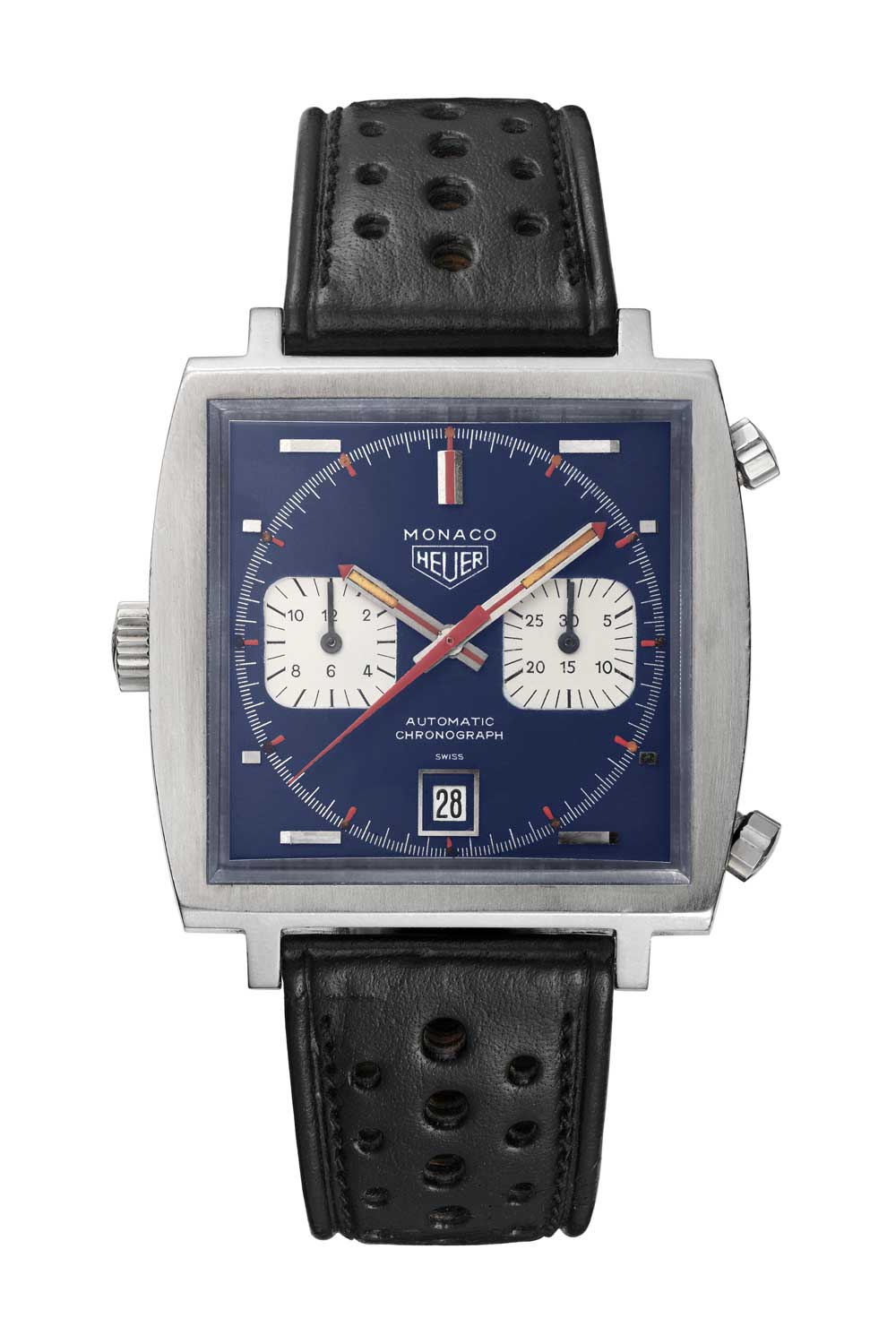
TAG Heuer Monaco from 1971, worn by actor Steve McQueen in the movie Le Mans
The extraordinary asset of having a product icon is the potential of rejuvenating it with new colors, lay-outs and functions as TAG Heuer has done with the launch of new models linked to the movie “Gran Turismo”. With its vintage looks and very unique case design, the Monaco is just the perfect timepiece to link up with the Gen Z in search of referential timepieces, both vintage and new.
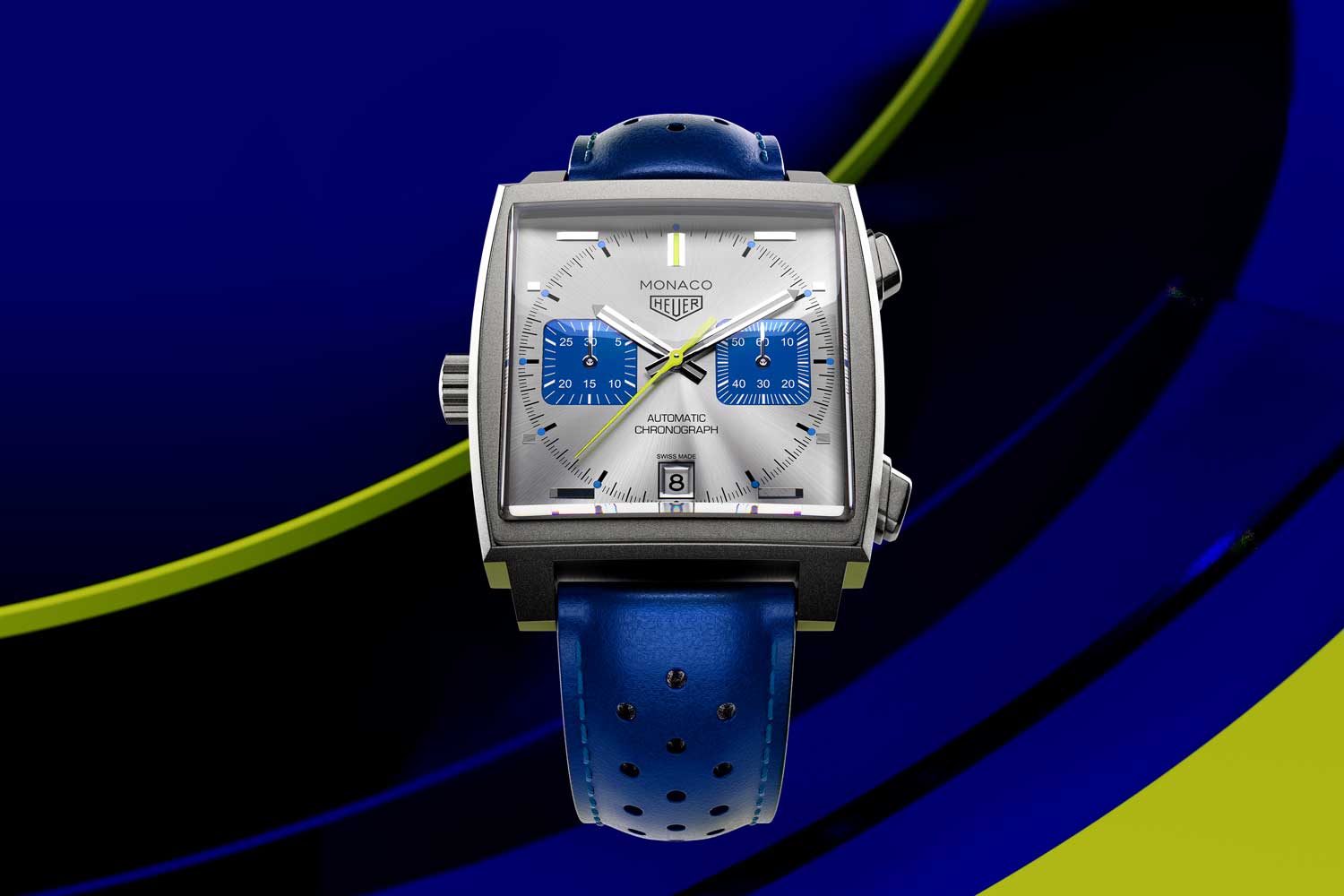
The new TAG Heuer Monaco Racing Blue
The Carrera is the other iconic watch
TAG Heuer might not have as many iconic watches as some of the other leading brands, but nevertheless it has another classic icon with the Carrera, born in 1963… just like the Rolex Daytona and both watches once shared the same base caliber, the Valjoux 72. The Carrera was in fact the continuation of the brand’s chronograph heritage of the 1940 and 1950’s. And the watch is also related to car racing, just as the sister product Monaco, and the Rolex Daytona… and the Omega Speedmaster which had been launched earlier in 1957 with a tachymetric bezel to measure the speed of a car.
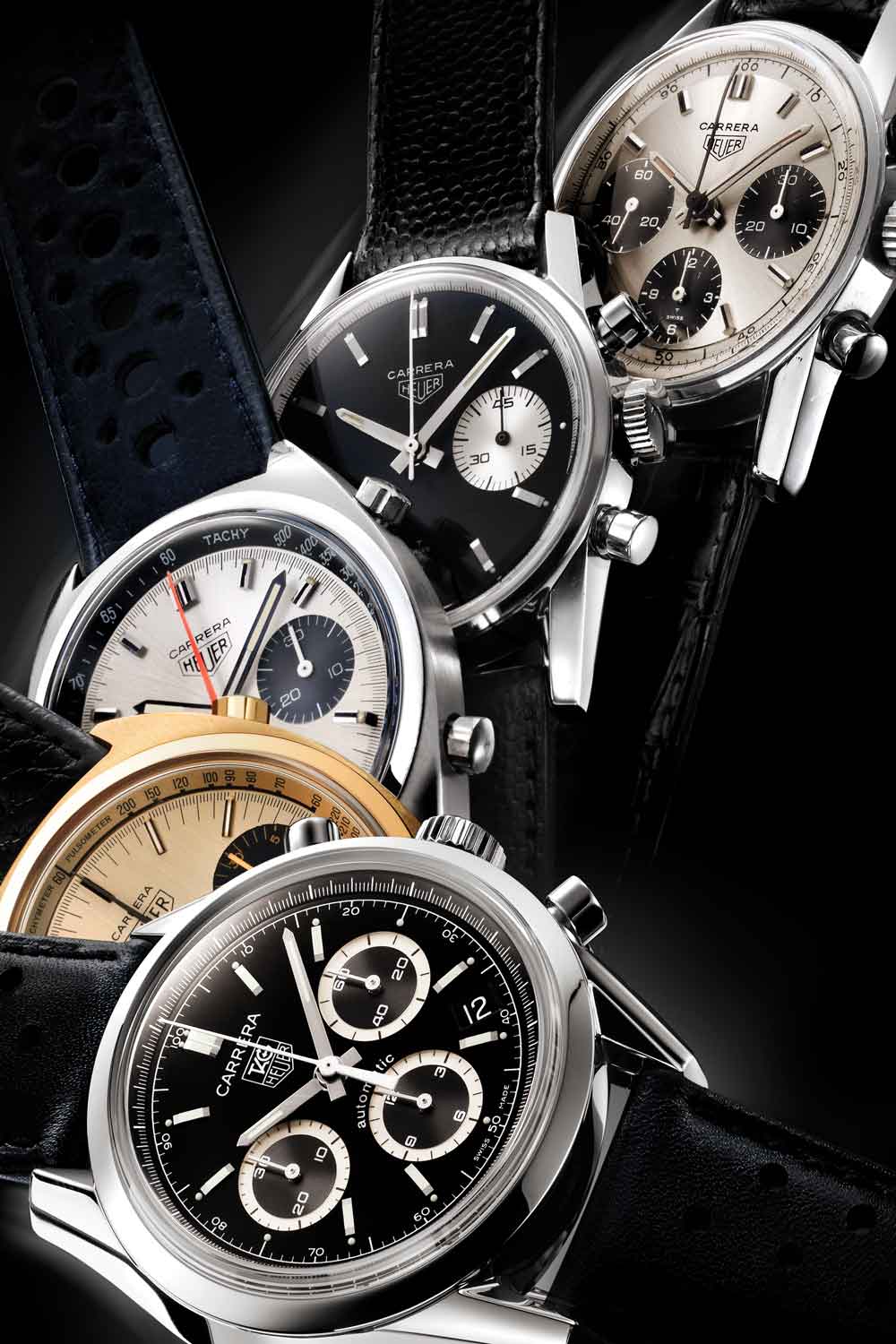
The design of the Heuer Carrera has evolved over more than 60 years
But the brand must stay coherent in its strategy of establishing hero products. One thing which TAG Heuer must handle with more discipline is sticking to certain basic rules. One product family equals one product territory but that’s a rule the recent launch of the Carrera Skipper doesn’t fully comply with. A remake of a 1968 model, the Heuer Carrera Skipper ref. 7754 which was affectionately named Skipperera, it stands out in a family of strong auto-inspired timepieces.
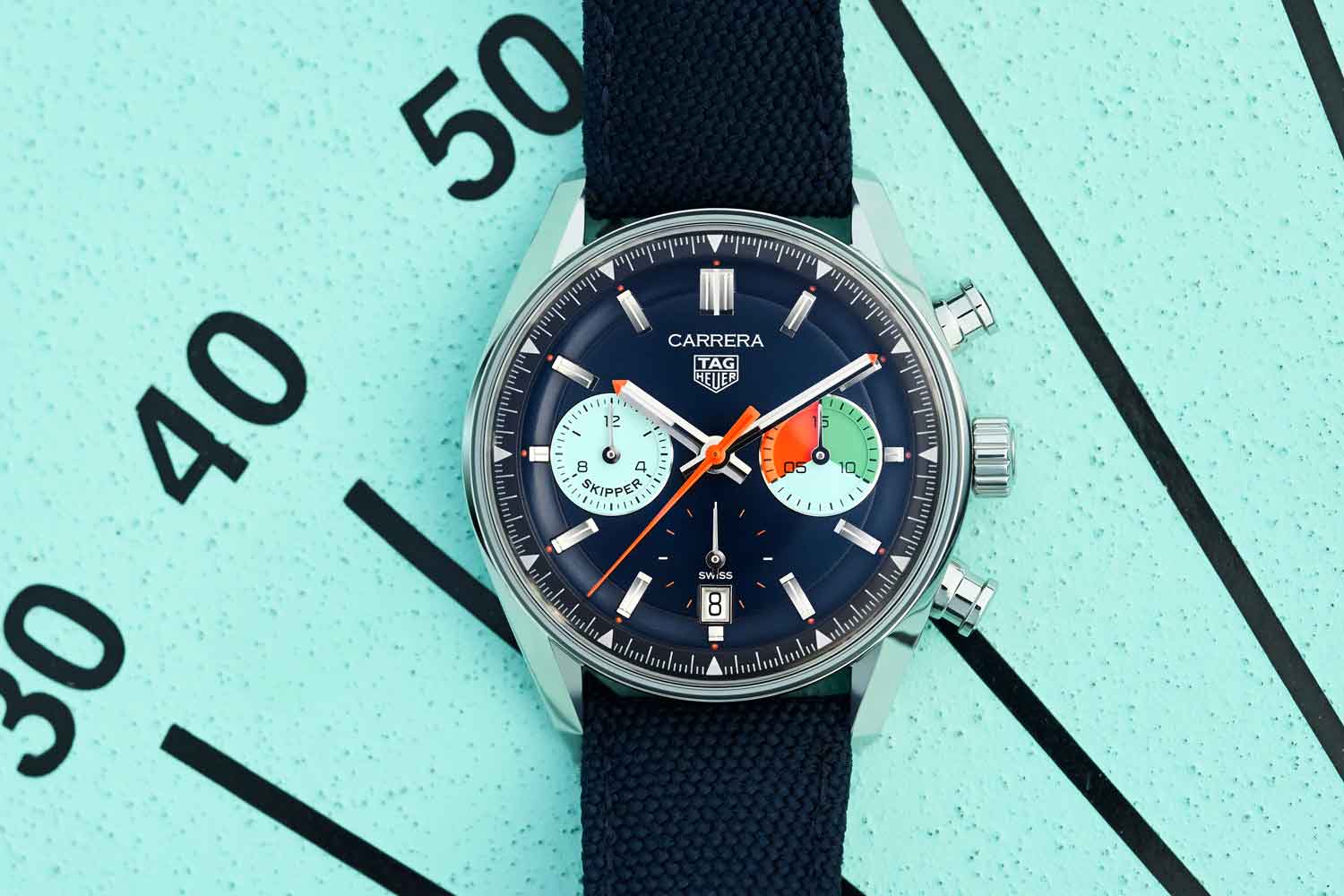
TAG Heuer Carrera Skipper
A long story with the racing car world
Heuer’s links with the racing cars go way back, and was followed by a collaboration with the Ferrari team. Their drivers — Niki Lauda and Clay Regazzoni — became brand ambassadors. The timepiece marking Heuer’s entrance to the world of car racing was the Carrera Automatic in 18k gold which is today one of the most sought-after collectors’ pieces. At the same time the team managing the time keeping at the races developed a new device called the Centigraph which was a very innovative electronic timing system.
Yet, the diversification of Heuer into electronical timing systems was an unfortunate mishap as Jack Heuer recalls in his autobiography The Time of My Life. The quartz crisis of the late 1970’s till the beginning of the 1980’s forced Heuer to pull-out from the sports chronometry business which they sold for a bargain price to… Longines. All these paved the way to the common thread of collaborations which relate to sports cars with for instance Porsche.
Choosing Porsche as a partner is a very smart move, because more than just selling cars, the German brand is the epitome of a company managing to create the magical bond between the brand and its clients. The German carmaker is in my humble opinion also the epitome of manufacturing precision or I should say perfection. The potential of this collaboration has yet to be fully exploited as the special editions linked to Porsche still have much room to grow.
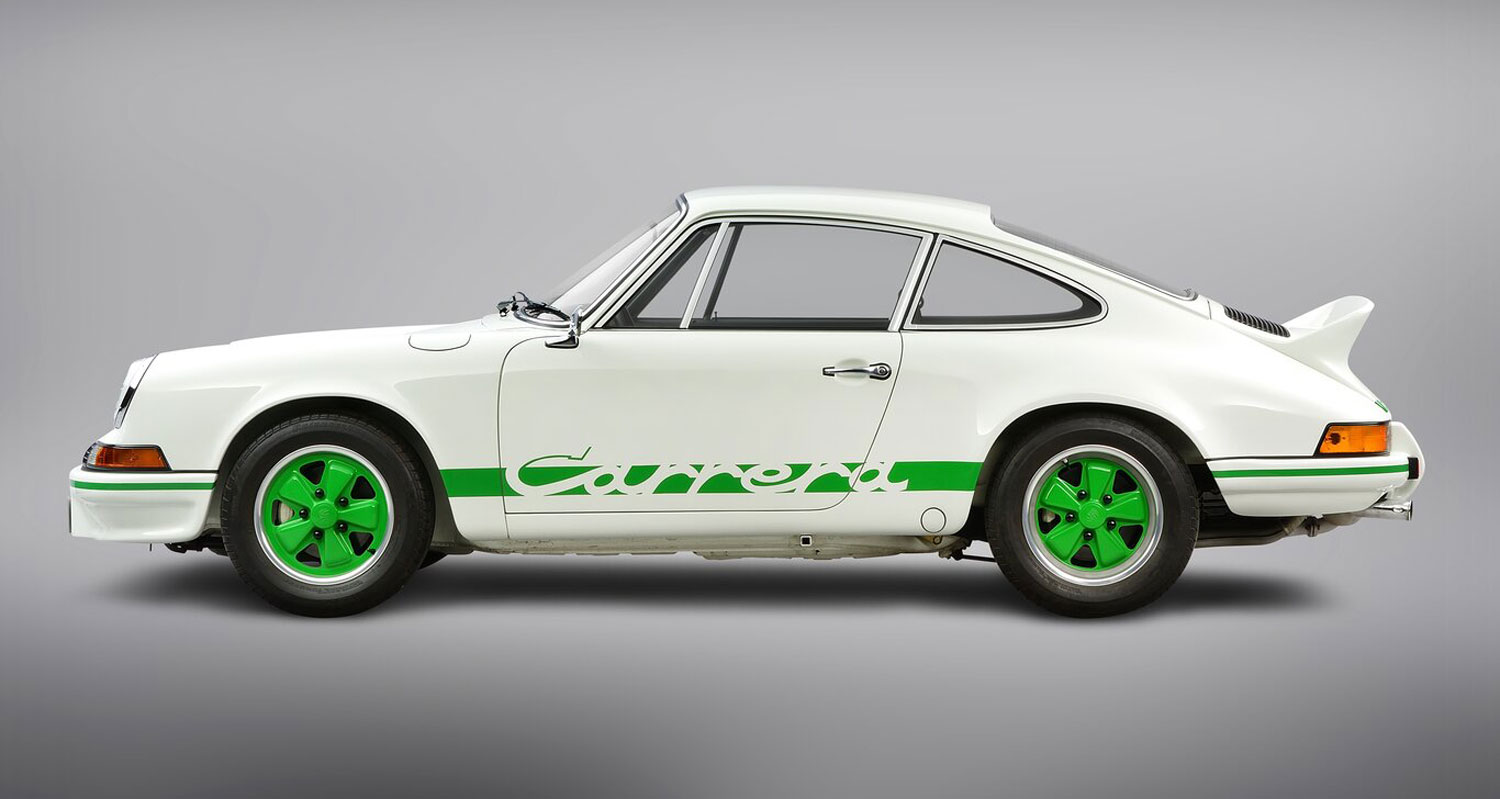
TAG Heuer and Porsche: a partnership made in brand building heaven
The interesting comparison between Porsche and TAG Heuer is also the fact that the German carmaker manufactures the most iconic sports car overall, the 911 (sorry for all the Ferraristi reading this, although I must confess that I’m also a huge fan of Ferrari). The 911 is the best example of an ever-evolving base design where nothing changes, but everything evolves and each new version is more accomplished than the one it replaces. And here’s another lesson to be taken from Porsche — for all watch brands and not only TAG Heuer — don’t be afraid to go your own path of innovation.
The die-hard fans of the brand almost quit their love when for instance the brand moved away from air cooled engines for the 911 or launched the four-wheel drive. However, the brand is stronger than ever today and is announcing its major shift to EV by 2030 (80% of its product offering). Which brings us to the smartwatches made by TAG Heuer…
Why smartwatches at TAG Heuer?
I made that lengthy comparison with Porsche because any watch brand today with a similar market positioning as TAG Heuer should investigate, or at least should have investigated around 2010-12 if smartwatches could be a new product category to conquer. The likeliness of smartwatches to stay for the long term is very questionable due to their limited lifetime and hence lack of sustainability. But one thing for sure is that in 2022, 15.8 million traditional Swiss made watches were exported, while more than 90 million smartwatches have been sold during the same period. Of that number, Apple sold more than 40 million.
At TAG Heuer, the former CEO and head of the watch division, industry legend Mr. Jean-Claude Biver, decided that the brand should venture into this new market to avoid missing out on a new Eldorado. Biver decided to partner with two major players from Silicon Valley, Intel and Google, to make sure that the technology would be provided by market leaders and always up to date, as it is common knowledge that technology product life cycles are short in the world of high tech.
The strategy was on combining high value materials with hybrid technology, meaning that they would look like conventional watches with analog time displays with hands, thus justifying the substantial price premium compared with their Asian and American competitors. The first series was quickly sold out due to the cleverness of Biver’s launch campaign during BaselWorld.
But then the wave of success soon stopped, as the potential market for people using smartwatches targets a price level which is closer to something below CHF 500 retail, which is a segment that harmed massively the entry level brands of Swiss watchmaking such as Swatch and Tissot. Even though TAG Heuer is regarded as an avant-garde brand, such a product category is very opex (operating expenses such as salaries or licenses) intense, with huge teams of IT specialists updating permanently the system and looking out for the next bug or breach.
And even though TAG Heuer chose to outsource most of the technology — unlike the very strange choice of Swatch Group to maintain its own OS for Tissot’s smartwatch — the smartwatch venture in general has a marginal impact on the topline (sales), but a major negative impact on the bottom line (the operating margin or EBIT).
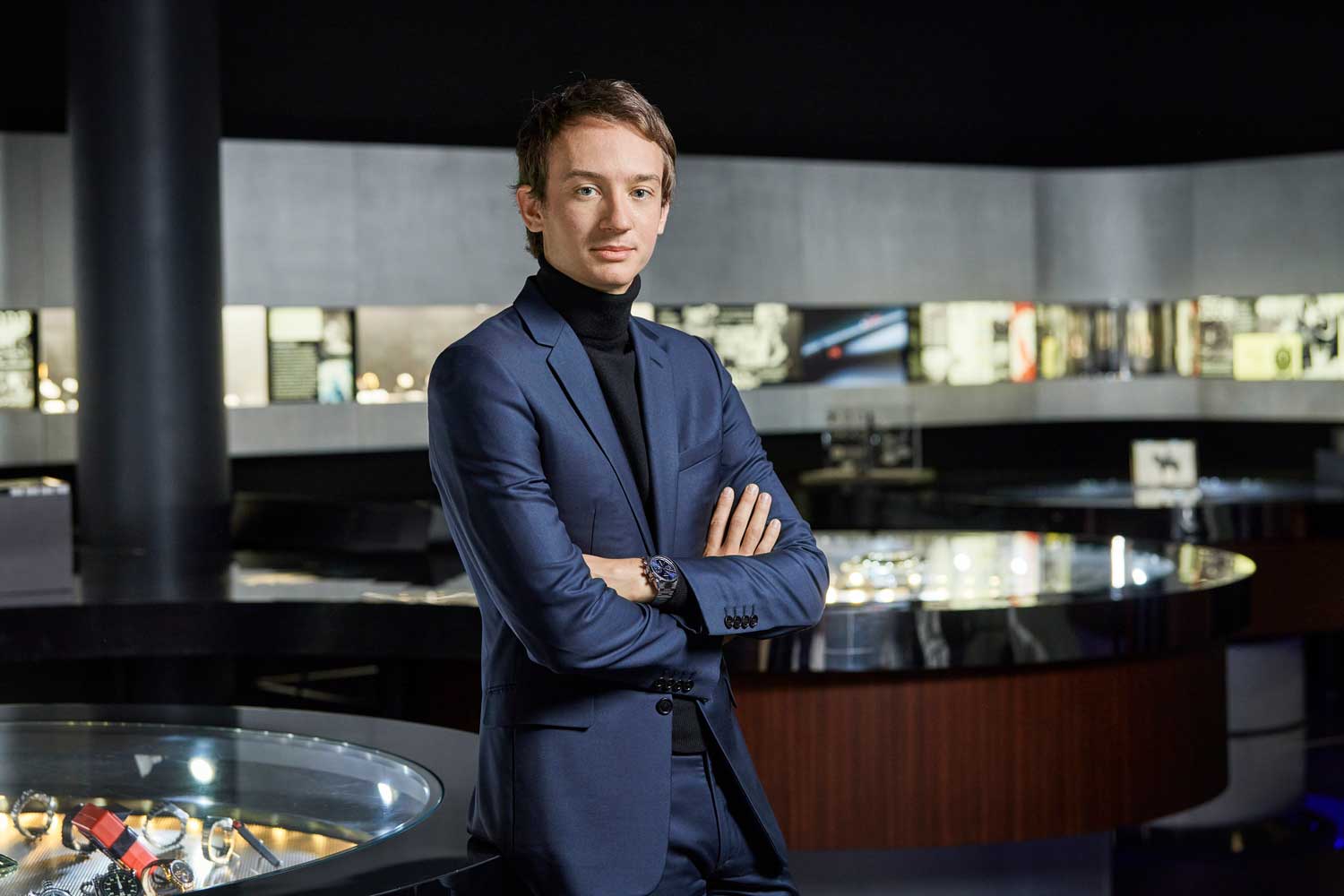
Frédéric Arnault has been involved in TAG Heuer product development and marketing since 2017
Refocusing on the brand’s natural territory
The product offering has been refocused on the brand’s “natural ground” or territory by eliminating very expensive ventures into the world of high-end watchmaking. The V4 or the Mikrograph have been certainly extraordinary communication vectors, but also major cost centers with investments going into the eight figures with no tangible positive long-term outcome.
The Carrera Chronograph Tourbillion has been repositioned on a more sustainable price level — thus becoming profitable — unlike when it was first launched, where it was assumed that once you have written off the R&D for the first series, the cost of goods sold is only the manufacturing cost.
A new CEO for new impulses
Meanwhile, Julien Tornare — current CEO of sister brand Zenith — is set to take over the helm of TAG Heuer and based on his track record, we can probably expect a hand-over with minor changes. His 6 years as CEO of Zenith have allowed the brand to stabilize and strengthen its product offering. His predecessors had all tried to kick start the brand, meant to bear a tremendous, unexploited potential, although Zenith has yet to establish itself as a brand that a vast majority of watch aficionados dream of.
The question for Tornare, thus, will be to decide if smartwatches deserve to remain in the collection and if so, how should he navigate the challenges of this ever-changing segment.
What we will probably see at TAG Heuer is an accelerated transition back to the icons such as Carrera and Monaco which are the brand’s “bread and butter” business. To regain lost ground from its main competitors, it will need to show consistency around a clear product offering. The recent product initiatives were very well received and are showing a clear path back to growth. And even in areas where TAG Heuer can’t compete in terms of horological legacy, it still has potential to revive its strong roots in sports chronometry, especially in the field of racing cars.
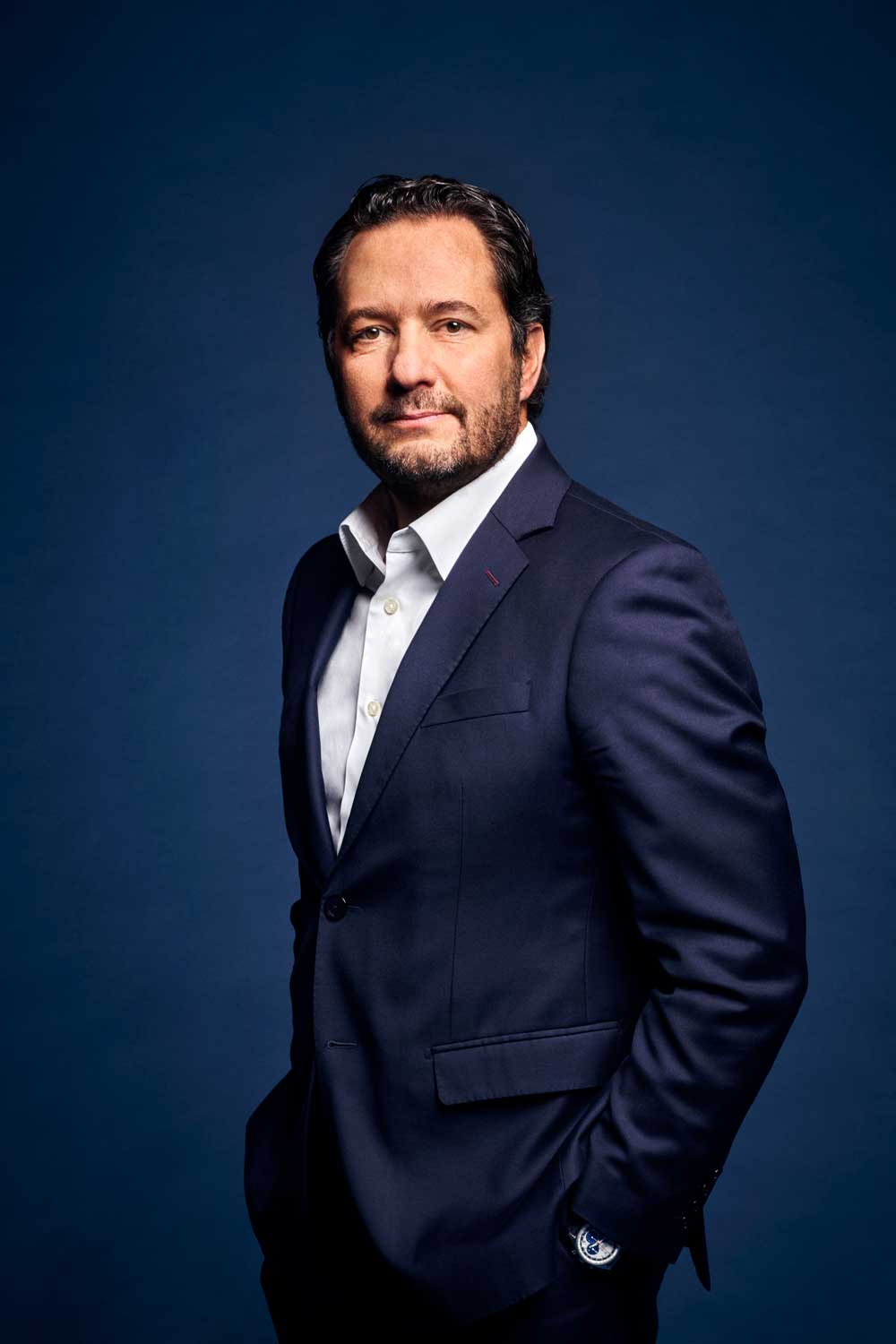
Julian Tornare is set to take over the helm at TAG Heuer this fall
On the journey to success
Are the recent changes in the product strategy sufficient for the brand to regain the momentum it had definitely lost in recent years? The recent product launches suggest that owners of the brand and its management have understood that stability is a key value to survive in a very competitive market with strong competitors. Pushing icons like Monaco and Carrera, clarifying the product offering and connecting with Gen Z through more contemporary messages are certainly some of the ingredients needed. Re-evaluating its strategy for smartwatches will probably be the next important step to regain the positive momentum the brand had until mid 2010.
And being owned by the luxury industry’s no. 1 – LVMH – which is starting to flex its muscles in the field of watchmaking will certainly help to restart a virtuous circle. As a whole, the group did lose some ground in terms of consolidated watch market share (LVMH watch division plus Bulgari watch division) of 7,9% in 2017 to 6,3% in 2022. But the chairman of LVMH Mr. Bernard Arnault is always known to play on the podium rather than stay in fourth place — just ahead of mono-brand company Patek Philippe with 5% market share. So all things considered, TAG Heuer is definitely an exciting brand to watch in the years ahead.




